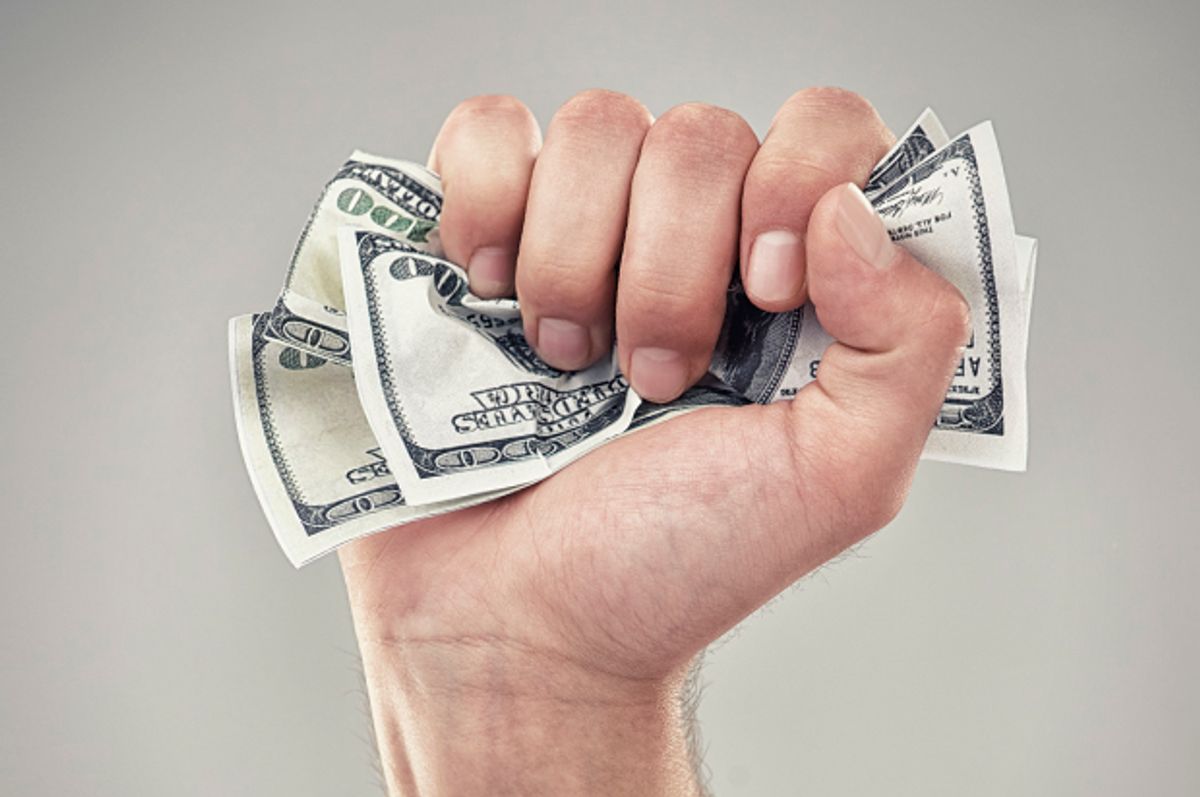When all forms of taxes and income are considered, poor Americans pay higher tax rates than the richest 1%.
The analysis starts with state and local taxes, which are often ignored by apologists for big-income tax cuts. According to the Institute on Taxation and Economic Policy, the state and local tax rate for the poorest 20 percent of individuals is double that of the top 1 percent (10.9 percent vs. 5.4 percent). New data from Thomas Piketty, Emmanuel Saez and Gabriel Zucman allows us to go further: When unrealized capital gains are included in the wealth-building of the richest 1%, the overall tax rates plunge for the super-rich, causing the poorest Americans to pay the highest rates.
What is the justification for adding unrealized capital gains to one's income? The 16th Amendment gives Congress the power "to lay and collect taxes on incomes, from whatever source derived." Thus, under an original definition of income developed by the American economists Robert M. Haig and Henry C. Simons in the 1920s and still utilized by financial economists, an increase in the value of a stock or other asset would be subject to taxation even if it's not sold.
With this more accurate guide to income measurement, the real tax rates paid by the 1% can be calculated. The bottom line is that poor Americans pay about 25 percent in total taxes, while the 1% pays anywhere from 18 to 23 percent.
Piketty, Saez and Zucman calculate government transfers to three groups: the richest 10%, the middle 40%, and the poorest 50%. Each group is evaluated for total transfers, including Social Security, as a percent of average national income.
Surprisingly, the middle 40% receives more government assistance than the bottom 50%, with a benefit equivalent to 23 percent of national income (see Figure S.13 in the report).
More surprisingly, the richest 10% as a group receives almost as much government assistance as the poorest 50%.
The critics of poor Americans should be informed that even after transfers, income for the working-age bottom 50% has not improved since 1979. And they should be reminded that the cost of the entire safety net is only about one-sixth of the $2.2 trillion in tax breaks and tax avoidance that primarily benefit the rich.
Most of society's benefits go to the super-rich and their businesses:
- Financial assistance: Stock markets, legal system, patent and copyright systems, intellectual property, contract law.
- The military: National defense, local police forces, National Guard, Coast Guard.
- Infrastructure: In the physical form of highways, railroads, airports; the energy grid; and in the form of communications though the airwaves, especially the internet.
- Federal agencies: Federal Reserve, SEC, FTC, SBA, FAA, NASA. Research at the Department of Defense, the Air Force, NASA, and public universities.
Today the taking of our national wealth can be tax-deferred indefinitely. A just society should have some form of wealth tax, as recommended by Piketty, perhaps as a modified version of the Haig-Simons call for taxing annual stock gains. Then millions of non-stockholders would rightfully get a piece of our 70 years of national prosperity.




Shares